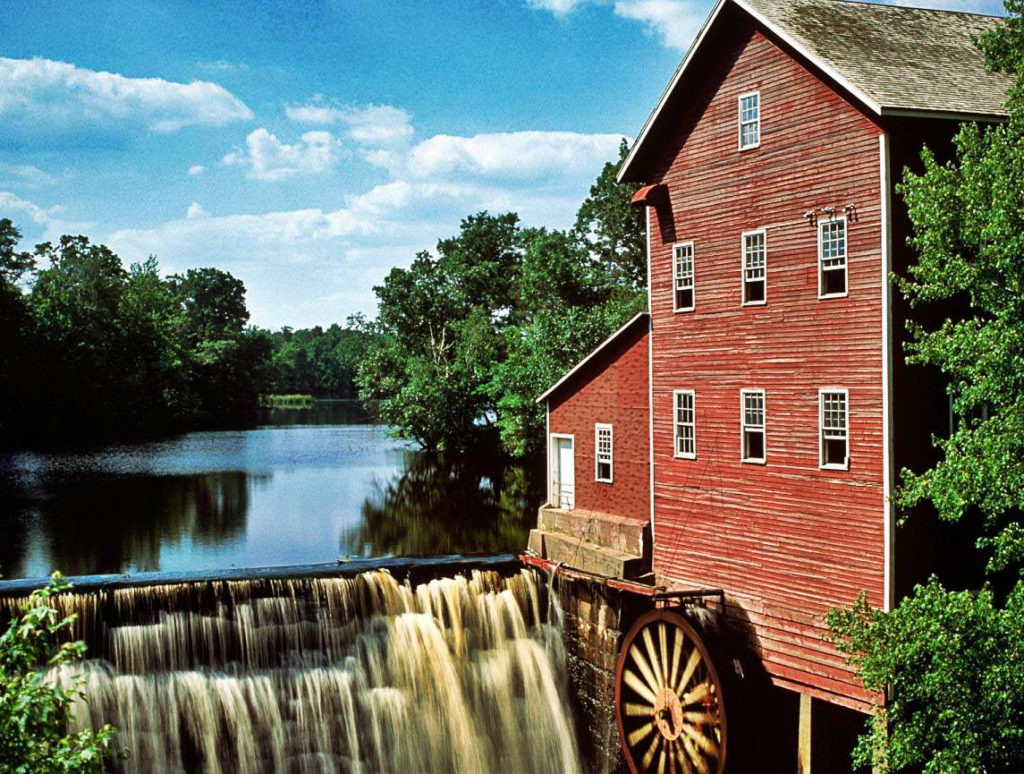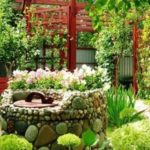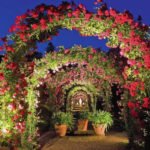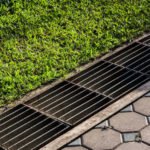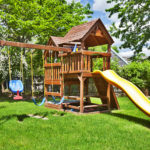The word “mill” makes me associate with something mysterious and fabulous. In ancient times, the mills were usually built on the outskirts of the village, and every Miller was considered a bit of a sorcerer. Hence the fairy tales about all sorts of fables that occur in water mills, where the forces of nature do their mysterious things. Since ancient times water mills worked for the benefit of people. They tirelessly rotated their wheels, setting in motion the millstone, where the ripe grains were ground into flour. Now mills have lost their functional purpose, but did not lose their decorative qualities and found a worthy application in the decoration of our suburban areas, giving them a kind of charm of bygone times. If you are in the country there is a pond or a stream, put a makeshift water mill! Believe me, it will look no worse than a garden sculpture, decorative waterfall or fountain.
What is a water mill?
Decorative water mill is a wheel that is installed on the shore of the pond with running water. The mill wheel is equipped with an axis on hinges, which allows it to move freely, and blades located at an equal distance from each other. On the blade, a water flow is fed along the chute installed from above, which drives the wheel of the mill. If there is no running water, a water pump can be installed on the decorative mills, with the help of which water will be supplied to the mill wheel and drive it.

Decorate the water mill
A simple wooden wheel mounted on the Bank of a stream or river looks boring. So many gardeners decorate the water mill, attached to her house, decorating it with everything. Around the house build a front garden, where flowers and shrubs are planted, inherent in the rustic style. Some equip over the mill canopy with weather vane, put a number of sculptures, beautiful benches where you can sit down to relax and watch the measured flow of water. Place the mill on your cottage will look more than impressive, if you elevate it to the appropriate illumination.

The design of the water mill with natural stones looks very interesting. They are laid out next to the wheel in a chaotic manner, emphasizing the naturalness of the natural landscape. Between the stones it is customary to plant tall herbs and coniferous crops: juniper, spherical arborvitae, undersized spruce, dwarf pine and other ornamental plants. Such a design gives mystery to the whole place, turning it into a fairy-tale fantasy, where under the uniform movement of the mill wheel and the noise of the flow is nice to escape from the daily hustle and bustle and think about the great mysteries of nature.
But before you add to the countryside landscape so colorful structure, take into account the overall concept of the design of the site. For example, a log water mill will look like an alien element in a country area, made in the classical style. But stone quite fit into the standard classic landscape. Consider the two most popular styles of landscape design with water mills.
Water mill in country style landscape
If your site has the attributes of rustic design: log bridges, wooden benches and gazebos, children’s houses made of wood and so on, the water mill with a wooden wheel perfectly fit into the landscape. And to emphasize the advantages of the town will help simple plants that have long been growing in Russian villages: daisies, sunflowers, primroses, reeds and others.

Water mill in Japanese style landscape
The fashion for a simple but noble design of suburban areas in the Japanese style is gaining momentum. There is nothing superfluous; the main components are plants, stones and water. In such a landscape perfectly fit water mill on the background of elegant masonry. And the mill wheel can be decorated “under the stone”, using white pebbles or shell rock (it turns out very nice).

